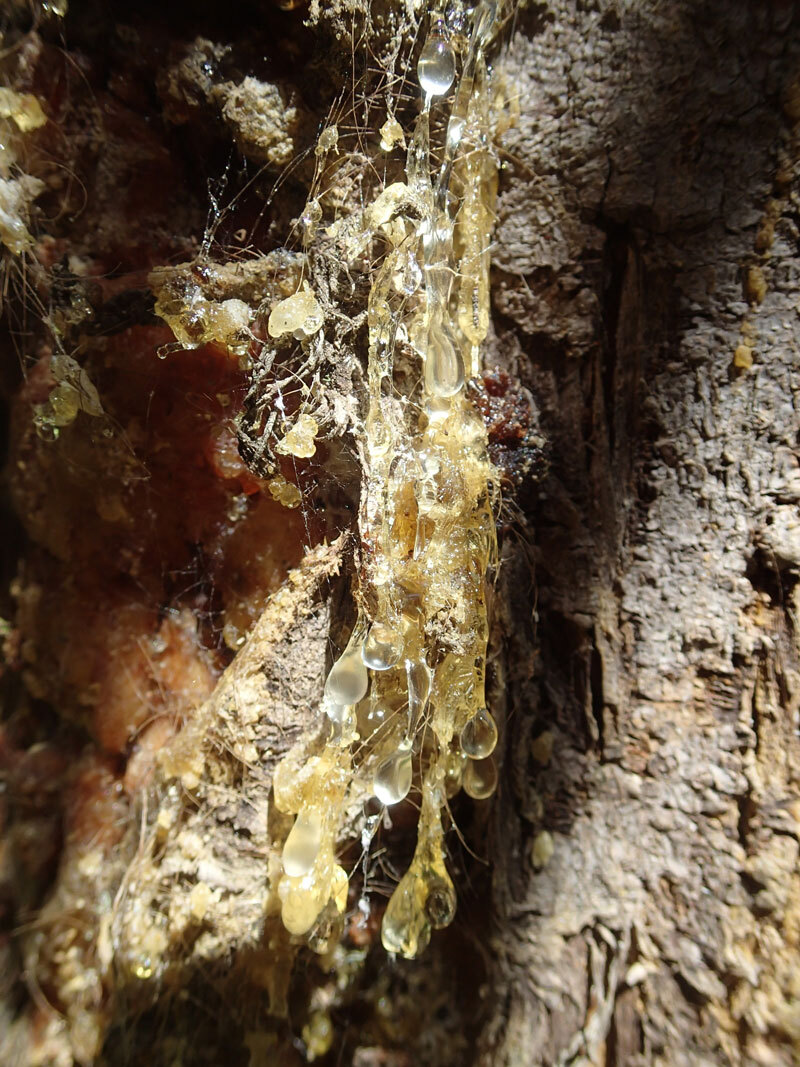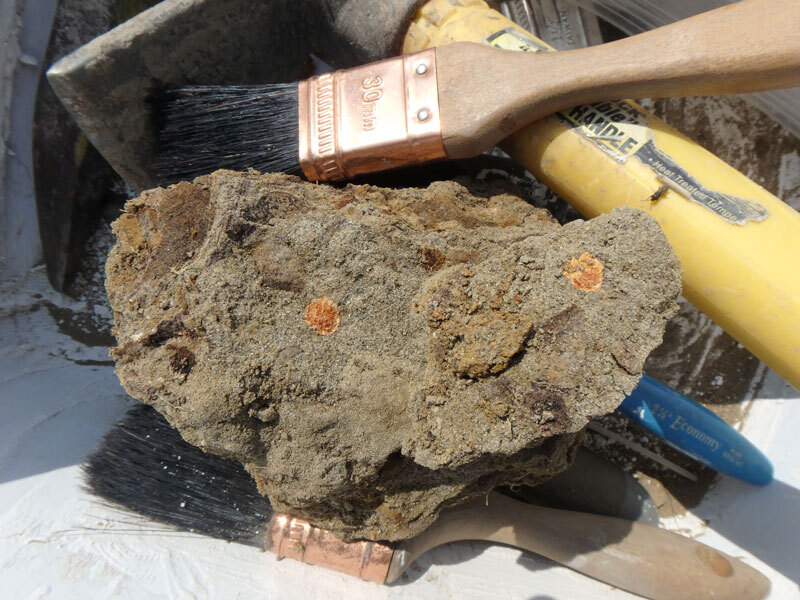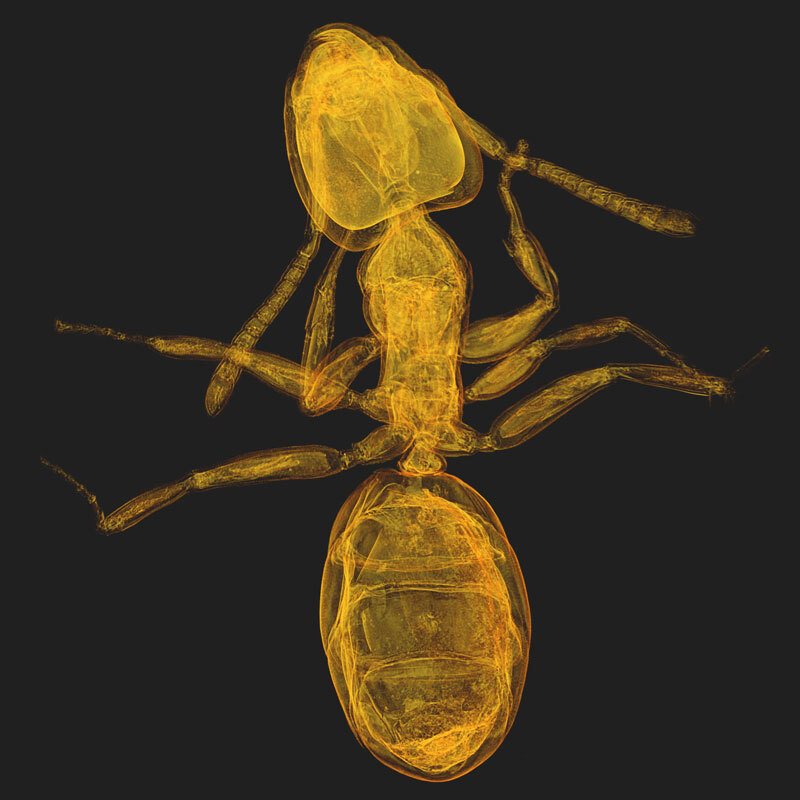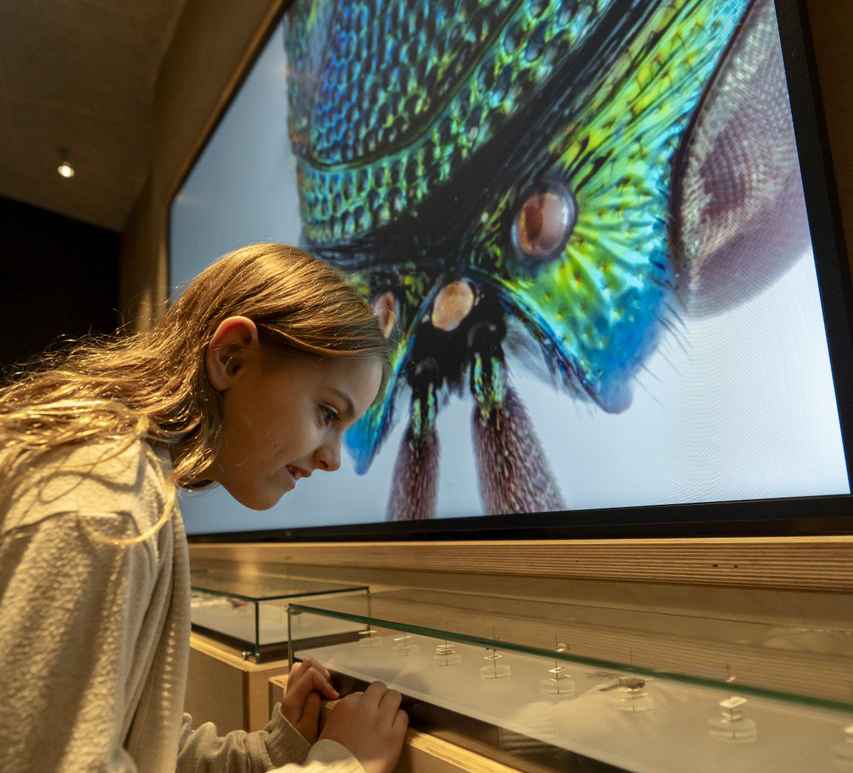
Resin from modern pine, with mammal hair caught in it at Cypress Hills Provincial Park. If this resin fossilizes, it becomes what is known as amber.
Amber does not have to contain animals or plant matter to be of scientific value. The tiniest pieces of amber, collected from a known location, can hold valuable scientific information. By completing chemical analyses on the piece, palaeontologists can determine the type of tree the fossil resin came from, details of the climate that it was living in, and perhaps even tell if the tree was growing under stressful conditions or not. We use techniques like infrared spectroscopy (measuring which wavelengths of light are absorbed by chemical bonds) to match amber deposits with modern resins produced by a wide range of trees. We also look at the stable isotopes of carbon and hydrogen trapped within the amber, to ‘fingerprint’ individual deposits. This fingerprint or signature allows us to examine conditions in the ancient forest, such as the type of water and atmospheric gasses that were supplied to the trees.

Amber from a Triceratops bonebed near Grasslands National Park.
Chemical analyses on Cretaceous amber collected in Saskatchewan indicate that our province has periodically been inhabited by redwood-like trees. These trees lived in swampy, warm temperate or subtropical conditions. (A good modern analogue might be the Florida Everglades, but with trees more like those of the Pacific Northwest.) Some of our amber deposits were strongly influenced by water from the Western Interior Seaway (a shallow sea that ran through the middle of North America), while others were farther removed from the coastline. Many of the deposits appear to have been formed under oxygen levels that are lower than they are now. Information from amber can be combined with data from fossil plant leaves and other groups of animals, in order to reconstruct ancient ecosystems. This sort of research allows us to examine how conditions have changed through time in Saskatchewan, and to create an ecological backdrop for many dinosaur bonebeds.

A Canadian Light Source X-ray micro-CT scan of an ant trapped in Baltic amber.
Beyond chemical analyses, we often retain pieces of amber that do not have any visible inclusions because future work may turn up something interesting. Recent advances in x-ray CT scanning have allowed palaeontologists to discover and describe new species of insects from opaque amber pieces. There has also been a lot of recent work on microscopic inclusions, like fungi and diatoms that have added to our understanding of how and where amber deposits form. Amber preserves a lot of unusual things, and we are always wondering if a slightly different view or technology would reveal something new.

